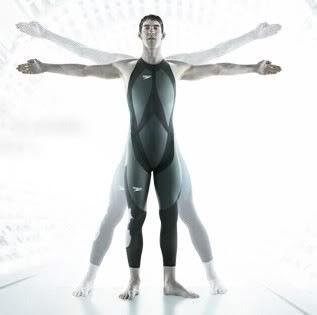I learned how to swim at a young age. I have swum for two different teams, for a total of eleven years. I now help coach a CYO swim team in my neighborhood. I am a former certified lifeguard and I am a Water Safety Instructor. I've gone through countless bathing suits, caps, goggles, pairs of flippers, towels, containers of baby powder, and bottles of de-chlorinating shampoo and conditioner.
I've even been the owner of three different "racing suits"- two aquablades and one fastskin. I used all three in high school, when I was a member of Midwood's Varsity Swim Team. Three years out of my four on the team, we were the undefeated Brooklyn Champs and swam in the playoffs every year. My freshmen year, my 200 free relay placed 1st in the Novice Championships at Lehman College for PSAL. The years after I placed respectively in 3rd, 4th and 5th places in the 200 medley relay, 100 butterfly, and 400 free relay. The bathing suits I wore while I swam those events probably didn't have much of an effect on my times- unlike these miracle polyurethane bathing suits that had much of the swimming community in an uproar. (Yes, I am aware that I am behind the times on this, but it came up in conversation at swim practice last week and I've decided I want to write about it).
In 2009, the World Swimming Organization FINA made the decision to ban polyurethane bathing suits, after Speedo had introduced the LZR Racer Swimsuit at the 2008 Olympic Games. The LZR had panels coated in polyurethane- these panels happened to be located over parts of the body which experience the highest amount of drag, aka, any part of the body that has fat or a developed muscle. If these panels compressed those areas of the body, the swimmer automatically becomes more streamlined, drag is reduced, and the speed of the swimmer in the water increased.
Once manufacturers realized what a gem they had stumbled upon, they went about creating a full body suit- made entirely of polyurethane.
Picture this (for you non-swimmers)- a full body suit that instantly slims all your “worry spots”, that makes you feel like you are walking on air. Forget about gravity- who needs that? This miracle suit will make you lighter, as well as look slimmer.
Sounds too good to be true, right?
Wrong. For swimmers wearing a full body polyurethane suit- this is a reality. Aside from compressing areas of fat and muscle, a full body suit creates an air pocket of sorts, between the water and the skin. For those familiar with the science behind something like this, you understand that the air between the water and the skin creates a force that pushes the body up and out of the water. Buoyancy. How well a swimmer floats in the water. If one floats very close to the surface of the water while swimming, less power is needed to propel the swimmer through the water. The motion created by a swimmer’s kick moves them forward, instead of having to do double duty and keep them afloat, as well.
So what? There are two important ideas at stake here- one: does this miracle suit change the biomechanics of the act of swimming; and two: if these suits really do increase a swimmer’s ability, how will this change the face of swimming?
Case and point: at the 2009FINA World Championships, Michael Phelps finished second to Paul Biedermann of Germany in the 200m Free. Biedermann smashed Phelps’ record for the event by almost an entire second- which may not seem like a lot, but in the swimming world is an incredible amount of time. While Phelps seemed content with accepting his 2nd place finish, his coach, Bob Bowman was not. You see, Mr. Phelps was swimming in his Speedo LZR swimsuit with polyurethane panels, and Mr. Biedermann was wearing his full body polyurethane suit. Did the full polyurethane suit provide an advantage? Bowman threatened to withdraw Phelps from the international swimming competition stating "It took me five years to get Michael from 1:46 to 1:42 and this guy has done it in 11 months. That's an amazing training performance. I'd like to know how to do that."
Bowman has a point. But how can you prove something like this?
Take a look at the video here:
http://www.youtube.com/watch?v=Sgm8Tbu33EQ&feature=player_embedded
Granted this is not the best video to look at to analyze the stroke of the two swimmers, but you do notice that Biedermann’s body position in the water is higher than Phelps’ body position, especially towards the end of the race. Biedermann’s kick is propelling him forward, while Phelps must use his kick to stay above the water and move forward. Before you jump out of your seat and declare that Phelps was robbed- consider some other factors. If Phelps was more tired than Biedermann at the end of the race, then sure, Bidermann would have easily overtaken him. Of course, if Biedermann’s polyurethane suit helped to keep him on top of the water, he would be less fatigued, because the bathing suit would have helped him to conserve his energy over the course of the race.
Phelps maintained that he was in fact beaten by the swimmer and not by the swimsuit. This does raise major issues in the wide world of sports- when does it become okay for technology to interfere in these kinds of ways? Is it ethical, logical, moral? On January 1, 2010, swimmers were banned from participating in competitive events wearing neoprene and polyurethane swim suits. If you ask me, the damage has already been done. Records set by swimmers wearing those suits won’t be touched for years- if ever.

No comments:
Post a Comment